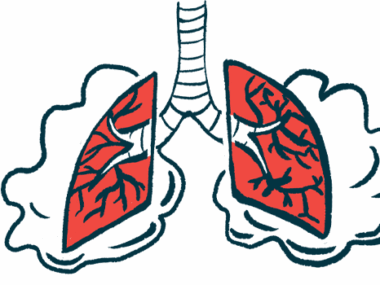Lung Clearance Index May Predict Lung Damage in Children
Written by |

A noninvasive measurement of lung function called lung clearance index (LCI) was associated with the degree of lung damage over time in children with cystic fibrosis (CF), according to a recent study.
LCI could be used to monitor lung disease progression in children with CF and may help clinicians intervene to prevent irreversible lung damage later on, the research team suggested.
The study, “Longitudinal lung clearance index and association with structural lung damage in children with cystic fibrosis,” was published in Thorax.
Although lung symptoms in children with CF are often mild, irreversible structural lung damage (SLD) is usually underway, progressing even when symptoms do not. It’s important to monitor this damage over time in order to track disease progression, the researchers noted.
Multiple breath washout is a noninvasive technique that can repeatedly measure lung function in CF patients of all ages. LCI values are one output of the test and reflect how much ventilation is required to clear the airways, with a higher LCI indicating worse lung function.
To better understand LCI as a predictor of CF lung damage, researchers in Sweden examined LCI measurements and CT scans over time in 75 children ages 0 to 17 who were recruited from a pediatric CF center. LCI values in healthy children from Sweden and the U.K. served as a reference group.
In the healthy children, LCI values decreased by 0.12 units per year until age 6, after which no further decreases occurred. In children with CF, LCI increased an average of 0.03 units a year, but the progression was not statistically significant.
“An increase in LCI in our clinic was often followed by an intervention with the aim to restore LCI to the patient’s LCI baseline, which might be one possible explanation to the absent of a significant LCI progression in our cohort [group],” the researchers said.
LCI significantly progressed among children born between 1990–1999 — with an average progression of 0.07 units per year — but not those born after 2000, which likely reflects improvements in CF care over time, according to the research team.
LCI also significantly progressed among girls, who showed an average increase of 0.11 units per year. While previous studies have suggested worse lung progression in girls with CF, the relationship requires more study, the researchers said.
An association was observed between LCI values and SLD progression, measured with a CT scan, throughout childhood. Specifically, increased LCI values were associated with worsening total airway disease and bronchiectasis — a thickening of the tubes that carry air to the lungs due to inflammation and infection.
“A mean LCI within the normal range during childhood corresponded to a low extent and slow progression of SLD, whereas a higher mean LCI resulted in more SLD and a higher SLD progression rate,” the researchers wrote. “High mean LCI may reflect a high degree of airway inflammation over a longer period of time, which could explain the relationship between a high mean LCI and a faster progression rate of the CF lung disease.”
The association was stronger when considering changes in LCI values over time, rather than only the most recent measurement, they wrote. This is likely because a single measurement can randomly fluctuate as a result of recent infections or interventions.
“We speculate that a high stable LCI over time should be considered as a risk factor for faster SLD progression and followed by interventions with the aim to pursue a lower LCI. By keeping LCI as low as possible throughout infancy and preschool ages, we may limit the SLD progression rate as well as preserve the subject’s lung function at early school age,” the researchers suggested.
“Our results support the clinical use of regular [multiple breath washout] examinations in children with CF with the aim of maintaining or pursuing a low LCI,” they said.







